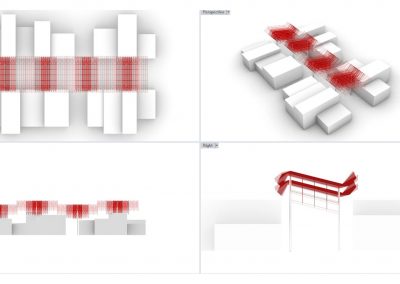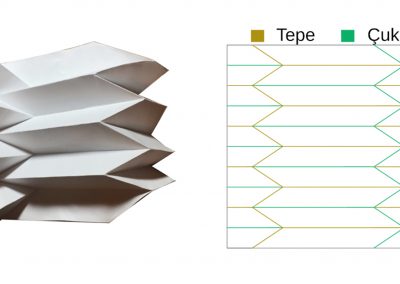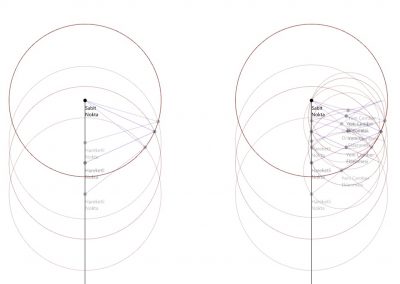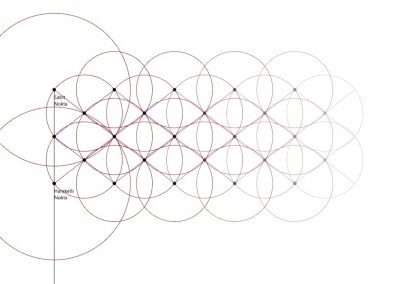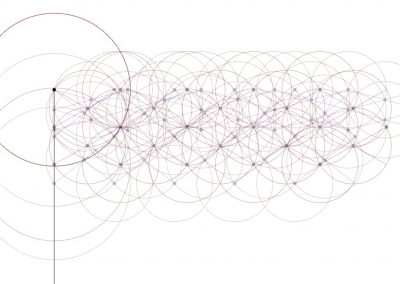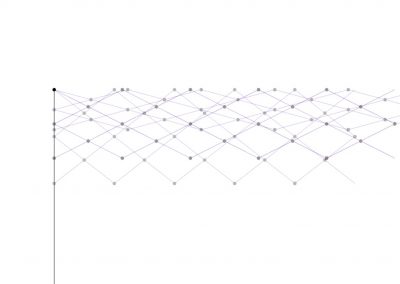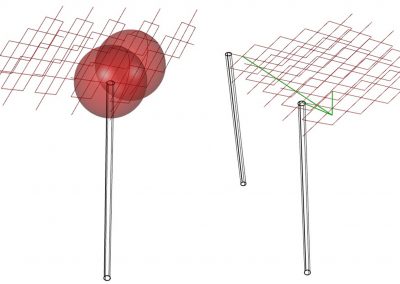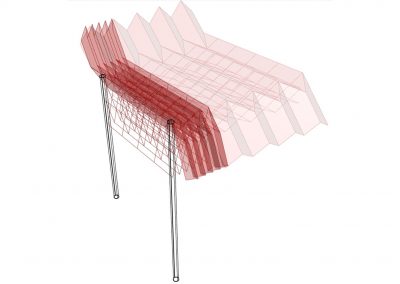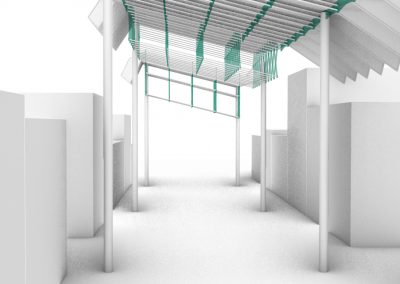Bursa Uzun Çarşı Üst Örtüsü Bilgi Tabanlı Tasarım Düşüncesiyle Yeni Bir Denemesi
Günümüzde sosyal, teknolojik ve ekonomik açıdan bir çok değişim hızlı bir şekilde gerçekleşmektedir. Bu nedenle her düzlemdeki bu değişim, her düzeyde bir uyum sağlama ihtiyacı doğurur. Çağın değişen ve teknolojikleşen taleplerine karşı mimarlık, dijital tasarım süreçlerinin, teknolojilerinin ve disiplinler arası çalışmanın yardımıyla, geleneksel mimaride var olan statik ve değişimsiz olguya çok yönlü bir alternatif ortam sağlamaktadır. Dijital ortamdaki bu değişim özgürlüğü kullanıcıların farklılaşan talep ve isteklerine, mimarların işlevsel açıdan zenginlik barındıran yapılar üreterek yanıt verme olanağı sağlamaktadır. Kinetik sistemler değişen talepler doğrultusunda esnek ve uygulanabilir mimari alanları hesaplamalı düşünce ve yöntemlerle çözen bir yaklaşım olarak karşımıza çıkmaktadır. Ayrıca bir Japon zanaatı olan origami, potansiyel açısından mimaride mekansal dönüşümler, hesaplamalı tasarım, form bulma vb. bilişsel deneyim kazanmak için arayüzler ve örnekler sunabilmektedir. Bu makalede, dayanıklılık kavramı esneklik ve geri kazanılabilirlik olarak yorumlanmış olup, katı origami kurallarından esinlenen geometrik desenlerle katlanabilir bir kinetik strüktür sistem üreterek, yeni yapısal konfigürasyonlar keşfetmenin bir yolunu aramayı amaçlamaktadır. Önerilen tasarım Bursa – Türkiye’de Hanlar Bölgesi’nde bulunan “Uzun Çarşı” üst örtüsünü bilgi tabanlı tasarım düşüncesiyle bir yeni denemesini oluşturmaktır. Var olan strüktürdeki güneşlenme ve yağmur suyu toplanma problemlerini kullanıcı konforu açısından ele alarak dönüşümlü sistem tasarlanması hedeflenmektedir. Bir protip olarak değerlendirip farklı tip noktalara uygulanabilirliği açısından analiz edilerek, sistem önerisini geliştirmek hedeflenmektedir.
A New Attempt with Knowledge-Based Design Thinking: Case of Bursa Uzun Çarşı Topcoat
Today, numerous social, technological and economic changes are happening rapidly. Thus, Therefore, this change at every level of its plane creates the prerequisite to adapt. In response to the changing and technological demands of the age, architecture provides a versatile alternative environment to the static and unchanging phenomenon existing in traditional architecture with the help of digital design processes, technologies and interdisciplinary work. This freedom of change in the digital environment allows architects to respond to the differing demands and requests of the users by producing structures that are functionally rich. Kinetic systems emerge as an approach that solves flexible and applicable architectural areas in line with changing demands with computational thinking and methods. In addition, origami, which is a Japanese craft, spatial transformations in architecture in terms of potential, computational design, form finding, etc. can provide interfaces and examples to gain cognitive experience. In this article, the concept of durability is interpreted as flexibility and recoverability, and aims to seek a way to discover new structural configurations by producing a collapsible kinetic structure system with geometric patterns inspired by strict origami rules. In the proposed design, Bursa Uzun Çarşı’s topcoat is selected as a case to create a new knowledge-based experiment with innovative design ideas in Han region of Turkey. A rotational system has been designed by considering the problems of insolation and rainwater collection in the existing structure in terms of user comfort. It is aimed to develop the system proposal by evaluating it as a model and analyzing it for its applicability to different types of points.
© 2021 Istanbul Technical University Graduate School, Department of Informatics, Architectural Design Computing Program. All Rights Reserved
